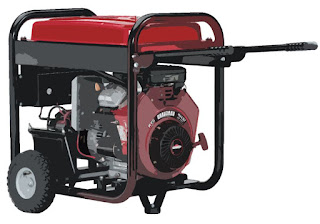 |
| CFL bulb can be a real issue! |
Ways to tidy up a broken CFL light bulb without a hazmat
team!
Prior to tidying up the busted/broken bulb
1. Remove all people and family pets from the space where
the bulb broke.
2. Open up doors and windows to air out the area for at
least 10 minutes before coming back for cleanup.
3. See to it to switch off your Air Conditioner or forced
space heater for the house.
4. Prepare the following materials:
a. Cardboard or stiff paper.
b. Sticky tape.
c. Wet wipes (for hard surfaces) or damp paper towels.
Ways to correctly cleanup the CFL damaged light bulb
1. DO NOT USE YOUR VACUUM CLEANER first! Vacuuming can
spread the poisonous mercury powder and/or the argon powder, which comes from
the damaged CFL light bulb.
2. Use the cardboard to tidy up the busted glass CFL bulb
and the poisonous mercury powder. You must place this cleanup materials right
into a jar which can be sealed or placed into a plastic bag with an excellent
seal.
3. Make use of the very sticky tape (packing tape will work
well) to tidy up any kind of the remaining poisonous powder that you couldn’t
sweep/cleaned up.
4. Once again, one of the most important things is to place all
the cleaning products and clean up materials right into a sealable container.
What to do after the cleanup.
1. Promptly, make sure all your clean up materials to
include any vacuum bags that you had to use to collect any poisonous mercury
powder that you might have had to use a vacuum for the final clean up2. Place
the cleanup products outdoors in a secured location till you could take care of
them appropriately.
3. Contact your state government, or city etc. for disposal rules
and guidelines. If there is no government or state constraints on disposal then
check with your garbage removal service provider.
4. If there is any way to continue to vent the affected
room, at least for 2 hours at a minimum; you should do this. At least allow it to
air out for a number of hours whatever is possible. The longer the better.
5. If you have any type of questions, concerns, or other
questions regarding a broken CFL clean up you could always contact your
regional poison control center at 1-800-222-1222.
If you have other inquiries or questions you could contact
via call or email to Todd Hill at Hill Electric in Palm Desert for additional
insight or instructions.
Todd Hillside
Hillside Electric
760-772-1770.





